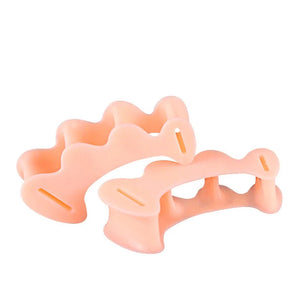Bunions are more than just a cosmetic foot issue—they’re a progressive, often painful deformity that can interfere with daily activities, especially for older adults. This common condition affects the metatarsophalangeal (MTP) joint, leading to a noticeable bump on the side of the big toe, often accompanied by pain, difficulty wearing shoes, and even increased fall risk.
A recent review by Andrea S. Aebischer and Samuel Duff offers a clear, clinical overview of bunion management, from conservative care to surgical intervention.
What Causes Bunions?
Bunions, or hallux valgus, typically develop over time due to:
• Footwear choices (tight or narrow shoes)
• Genetics
• Biomechanical issues
• Arthritis or other inflammatory conditions
They are especially common in older women, but can also appear in adolescents (referred to as juvenile bunions).
⸻
First Line of Defense: Non-Surgical Treatment
For most people, the first step in managing a bunion is non-operative care, including:
• Accommodative footwear: Wider shoes with a roomy toe box can reduce pressure and pain.
• NSAIDs: Medications like ibuprofen help manage inflammation and pain.
• Orthotics and Braces: Custom inserts or bunion splints may offer relief.
• Toe spacers: These simple devices can help realign the toes and ease discomfort.
While these approaches often provide symptom relief, they don’t reverse the deformity and may not offer long-term results for all patients.
⸻
When to Refer for Surgery
If conservative measures fail, surgical consultation may be appropriate. According to the review, referral to an orthopedic surgeon is recommended when:
• The bunion is painful and persistent
• The patient has tried and exhausted non-operative options
• The patient is a suitable candidate for surgery
However, cosmetic concerns alone are not a valid reason for surgery. And importantly, smoking is a relative contraindication—patients should quit smoking before pursuing an operation.
For children and teens with juvenile bunions, surgery is usually postponed until after skeletal maturity to avoid complications.
⸻
Takeaway
Bunions are a common foot issue, but they’re manageable—especially when addressed early. While conservative treatments can bring relief, there’s a clear place for surgical intervention in more advanced or symptomatic cases. A patient-centered approach that starts with non-invasive care and transitions to referral when appropriate remains the gold standard.
Bunions: A review of management
Andrea S Aebischer, Samuel Duff
This blog post is purely for informational purposes only and should not replace professional medical advice. It is essential to consult with a healthcare professional for an accurate diagnosis and personalized treatment plan based on your specific condition.

